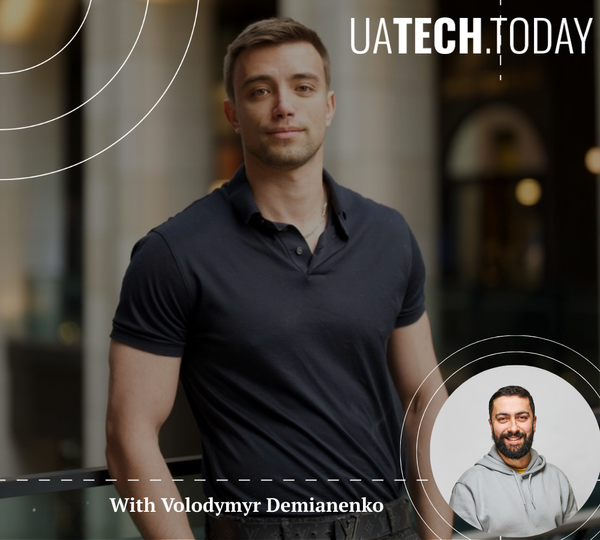What does it take to turn a childhood passion into a million-dollar success?
For Stan Tatarnykov, it started with a simple love for games, and a relentless drive to build something of his own.
Stan Tatarnykov is the owner of mobile game studio Gatarn Games Ltd. and the creator of hit web game Mope.io. Just last week, Gatarn Games launched their newest pets mobile game, Rumblets Go, now available for Android users in Canada via Google Play.
Download now: https://play.google.com/store/apps/details?id=com.GatarnGames.RumbletsGO&hl=en
The full global launch, including iOS, is expected in the coming weeks.
In this exclusive conversation with UAtech founder Volodymyr Demianenko, Stan shares what it really takes to build a hit, and sell it, navigate the ultra-competitive mobile market, and how AI is helping small studios compete with giants.
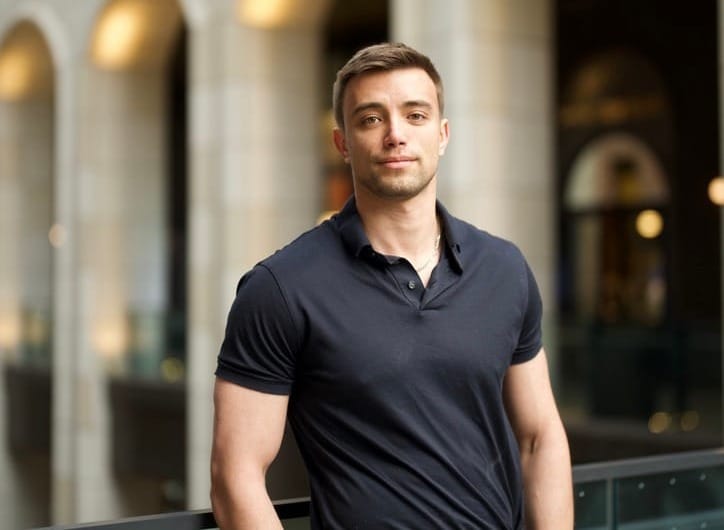
Volodymyr Demianenko: Tell us, where did your journey begin? How did you start in the gaming industry?
Stan Tatarnykov: I always made games for fun as a kid. Ever since I was 12 years old, I have played with Game Maker -you can make games without knowing how to code. When I got into university, I knew I wanted to drop out and start a business. I learned how to make iPhone games for fun. So, I figured, why not just release some iPhone games? There was a trend at the time — a lot of people probably remember Flappy Bird being extremely popular. I noticed that there weren’t any good clones or similar games on the App Store. I decided to make one myself.
I made my simple version, launched it, and it got 200K downloads. It hit #80 in Canada for free apps for one day. And it was number one for the keyword Flappy Bird in Canada, which was pretty cool. I didn’t make much money, but it was a great learning experience. That’s when everything got started.
Over two years, I launched about eight or nine mobile games based on popular trends. Then I switched to web games and launched Mope.io, which went viral. Big YouTubers played it, and it got millions of views. That’s when my company officially started. Originally, it was called Mope.io Limited. I ran Mope.io for about four years. During that time, the game generated steady passive income through ads, including video ads, banner ads, and later, through in-game purchases where players could buy coins and different animals.
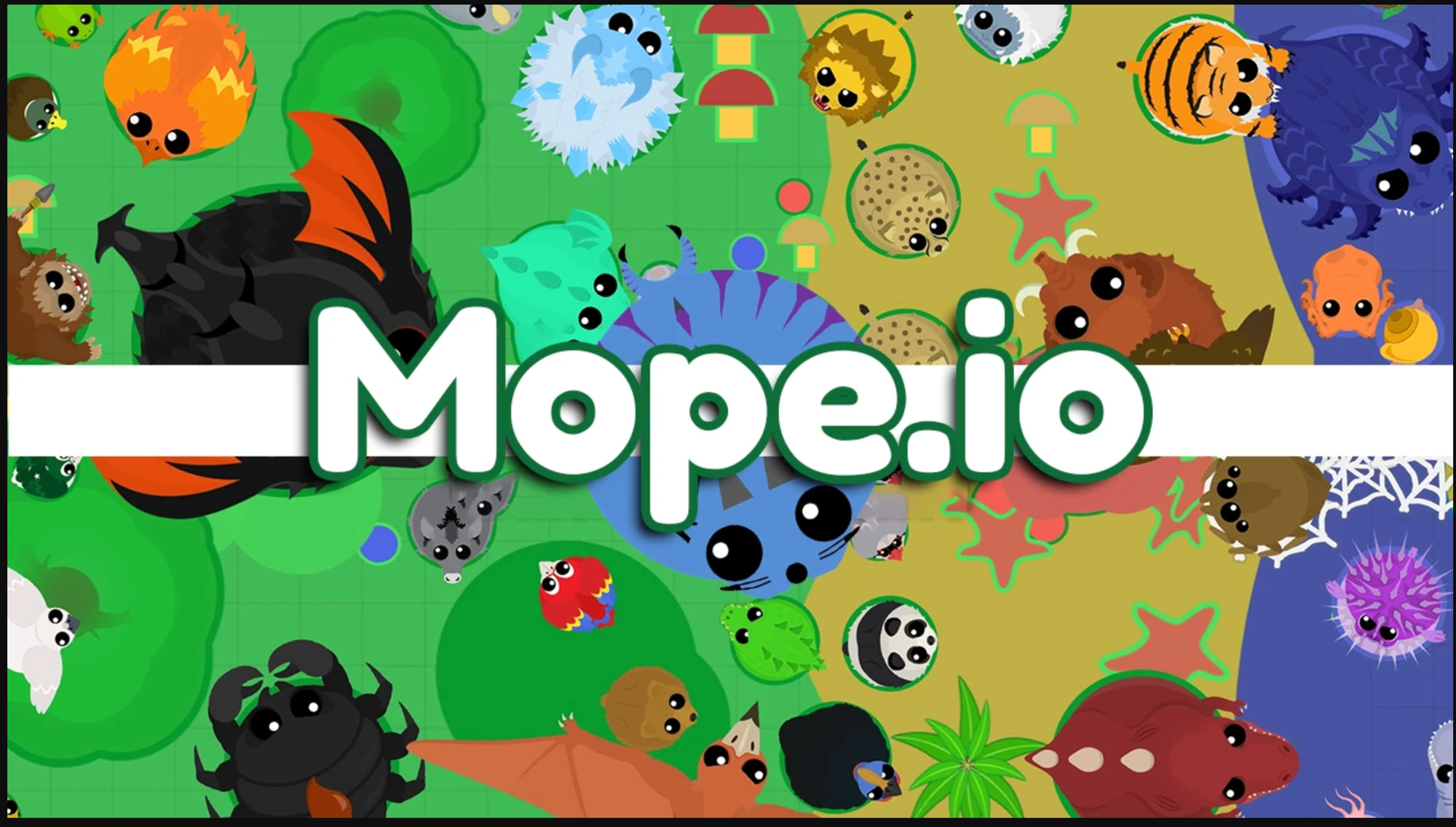
After four years, a major gaming platform, AddictingGames.com, approached me. They liked what I had built and asked for more details — player counts, revenue numbers, and traffic stats. I shared the data, and shortly after, they made me an offer. At first, it was just an okay offer, but after three months of negotiations, we finalized the deal and sold the game.
After the sale, I decided to rename my company to Gatarn Games, inspired by my last name, Tatarnykov (I combined “Tatarn” with a "G" to make it sound catchier and more marketable).
Volodymyr Demianenko: Can you share some numbers around Mope.io?
Stan Tatarnykov: Within three days of launch, we hit 3,000 concurrent players. At our peak in December 2017, we had 21,000 players online at once. Acquisition-wise, while I can’t disclose the exact numbers, the deal was for over $1 million, all cash.
It was a complex deal, not just a simple lump sum payment, but overall, it was a solid sale, worth several years of the game's revenue.
Volodymyr Demianenko: Can you share how the acquisition came about? How did you feel during the negotiation process?
Stan Tatarnykov: Negotiations were stressful because everything was remote, during COVID, relying on trust and escrow services. Addicting Games initially offered partial cash with an ongoing revenue share and wanted me to work for them. But I knew I didn’t want that — it was either a full buyout or nothing.
I only hired a lawyer for a few hours to save money — you don't really need to spend a lot on expensive legal help for deals like this.
(And this was all before ChatGPT and tools that make things even easier.)
The negotiation itself was stressful, not just because of the deal, but because I constantly had to convince myself that I was willing to walk away.
If you can't say "no," you can't negotiate properly.
During the talks, the buyers would often say things like, "This is the highest we can offer — our investors won’t approve anything more."
But if I held my ground and pushed back, somehow, they would find a way to offer more the next day. That's just how these negotiations work — people often bluff. It's normal. You have to stay calm and firm to get the best deal.
Volodymyr Demianenko: How did you feel after the deal was finalized? What were your next steps?
Stan Tatarnykov: Sure. On one hand, the deal was great because I received the money upfront, and at the time, Mope.io was starting to slowly lose players. It was still generating solid revenue with very little expense, so if the deal hadn't been strong enough, I wouldn’t have accepted it. I wasn’t in a position where the game wasn’t making money, quite the opposite. They were offering me a large lump sum instead of continuing to collect smaller payments over the years.
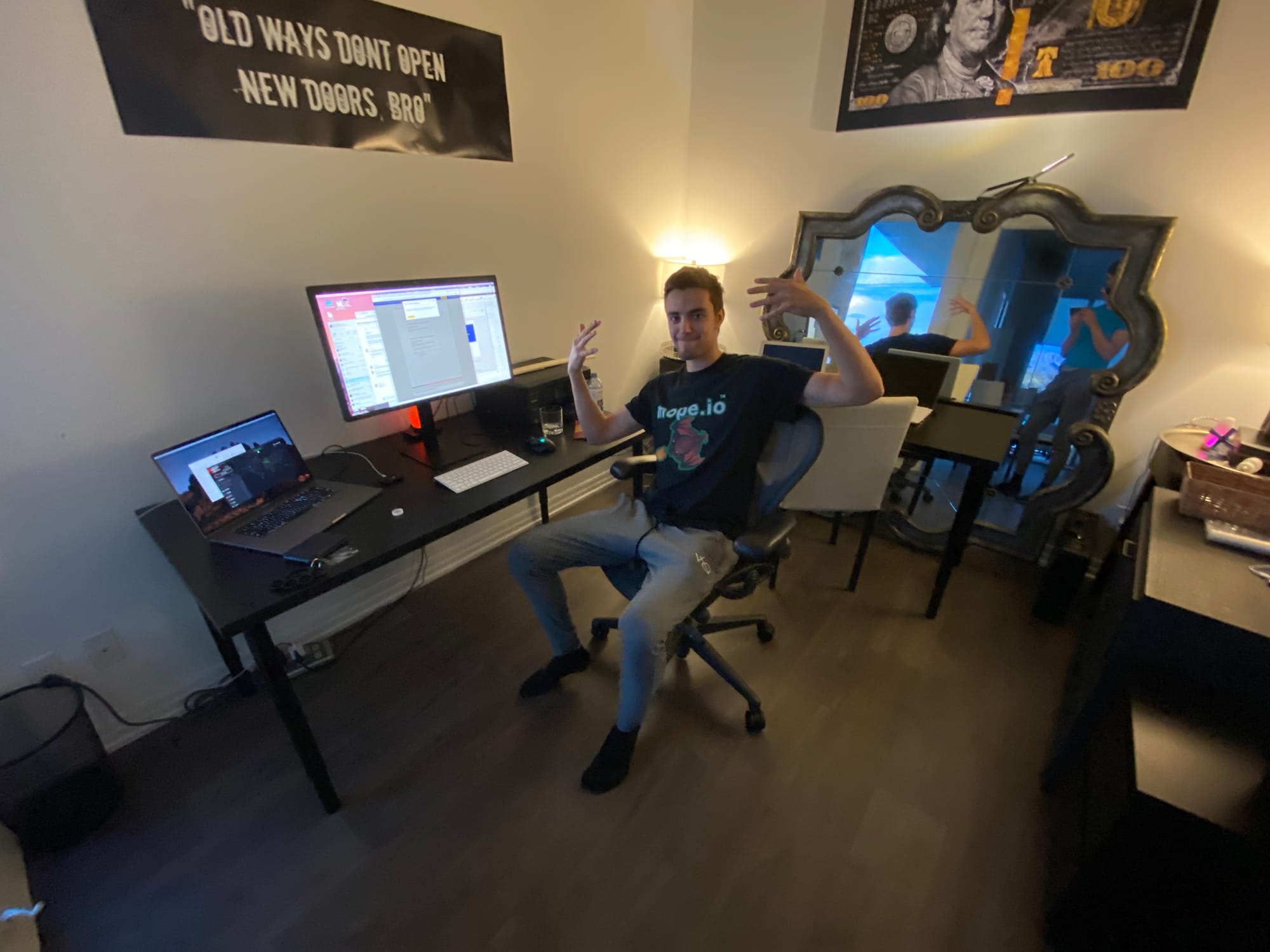
As for how it affected my life, honestly, not much changed. The money didn’t come all at once; the deal had separate payments and some complexity to it. But I did get a significant amount upfront. What helped a lot was that stocks started rising during COVID, around late 2020. After the market initially crashed, it rebounded sharply, and I was lucky to invest at almost the bottom.
I bought Tesla stock at the equivalent of about $100 (maybe even lower for some shares) and Bitcoin at around $14K to $ 20 K. That helped, although looking back, I wish I had invested even more.
I started spending a little more on restaurants, travel, but overall, my lifestyle didn’t change much because the game had already been providing solid income before the sale.
Volodymyr Demianenko: And you bought a Lamborghini Urus, right?
Stan Tatarnykov: Yeah, that was about two years after the sale.
Stocks had done well, and at one point my portfolio was worth a lot, and I decided — you know what, I’m young, it’s time to finally get a supercar. My friends and I had been renting nice cars — a Lamborghini Huracán, a Rolls-Royce, a red Ferrari — just trying different ones. In the end, I realized I liked the Urus.
Volodymyr Demianenko: Was buying the Urus your way of celebrating this milestone?
Stan Tatarnykov: In a way, yes. I grew up pretty humbly and wasn’t sure what to do with having more money. I chose not to buy real estate at that time because I thought the market was overpriced, and I was right, condos crashed shortly afterward. So, with some extra money and nothing else I particularly wanted, a supercar seemed like a fun way to mark the moment.
I had already traveled, rented boats, enjoyed experiences... and I figured, "What's the point of having money if your life doesn’t change at all?"
Volodymyr Demianenko: Makes sense. So, when did Gatarn Games come into the picture? Right after selling Mope.io?
Stan Tatarnykov: I took a couple of years off to relax and focus on learning — especially 3D game development and modern game engines like Unity.
When I built Mope.io, I didn’t actually know much about formal game development. I just figured everything out through trial and error. It was built completely from scratch. The game was simple — mostly shapes and multiplayer logic — and didn’t require advanced tools. Later, as I studied more, I realized that sometimes knowing less can be an advantage. Simple ideas like Agar.io became huge hits because they didn't overcomplicate things.
Volodymyr Demianenko: Let’s talk about the present — what is Gatarn Games today, and what’s your future strategy?
Stan Tatarnykov: Sure, I’ll summarize it a bit. When I first started Gatarn Games, I was used to working very lean. Back when I ran Mope.io, I had just one remote full-time developer and a few freelance artists.
Hiring a local team in Canada was a completely new experience for me. In late 2022, after about six months of posting job ads, reviewing candidates, and some procrastination (mainly because I was nervous about hiring the wrong people), I made my first local hire — a producer.
He acted almost like an assistant, helping with putting up ads and conducting interviews. Honestly, I didn’t yet know how to properly filter candidates, and our project was pretty niche, so it was tricky to find top-tier talent. But we built a good enough team and moved forward.
We started working on a game called Skillfight.io, a browser-based MMORPG inspired by games like RuneScape that I loved as a kid.
Unfortunately, I didn’t do enough market research before committing, and we eventually realized that this type of project wasn’t very profitable or viable.
We spent about a year getting the first version out, then another six months pivoting to make it a more complete MMORPG — but even after the launch, it became clear it wasn’t going to succeed financially. In total, we spent almost two years trying to make Skillfight.io work before deciding to shift direction.
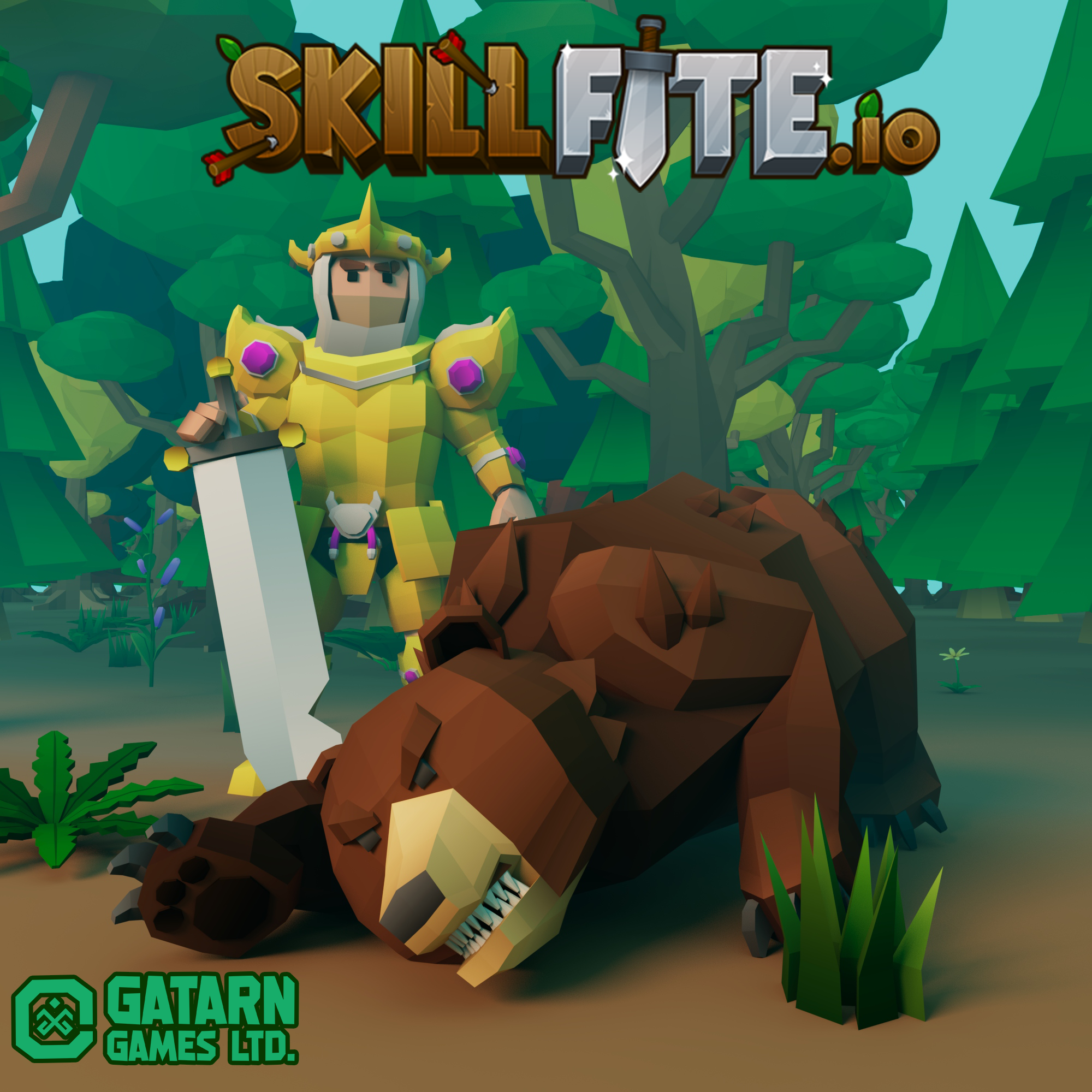
After that, we transitioned to using Unity, the most popular game engine for indie studios like ours. I also started building a new team, bringing on people with more experience in mobile gaming, because I realized that’s where the real market opportunity is. I’m better at building simpler, more accessible games (sometimes even kid-friendly), and that fits the mobile space well.
Volodymyr Demianenko: And about Skill Fight — since it didn’t work out, what advice would you give to someone who wants to start creating games and avoid similar mistakes?
Stan Tatarnykov: First and foremost — do your research. Don't just create a game you love personally. Sometimes, a game you like might have been a great opportunity five years ago, but not today.
You need to check if games similar to the one you want to make are actually doing well today. You also need to see who’s making them. If a massive studio with hundreds of employees is behind it and no small indie team has succeeded in that space, it’s probably not realistic to expect different results with a small team.
If you notice that three games like yours have launched recently and failed, that's a strong signal to either rethink your approach or move on.
It’s easy to skip market research because it’s tedious, but it’s critical. You need to understand how much similar games are making and whether your team realistically has the skills and resources to compete.
If you're a solo developer today, I honestly wouldn’t recommend trying to make a mobile game at all — it's just too competitive. It’s better to explore opportunities in spaces like Roblox or VR where individuals can still have a real impact.
Mobile is a high-risk, high-reward market. You either make a lot of money or you lose a lot.
Volodymyr Demianenko: Let’s move on to the next topic. I want to ask you about your new product — what are you building, what’s the idea behind it, and what’s your plan?
Stan Tatarnykov: Sure. After doing a lot of research into the mobile games market, I spotted some new opportunities — specifically, game genres that are performing well right now. Some of these successful games are made by relatively small teams, which gave us confidence. Our own team is even smaller — at our peak, we had about eight or nine people, depending on contractors and artists. In comparison, teams working on similar games often have between 12 and 20 people.
So it’s a bit ambitious for us, but it’s not impossible. We made sure to do solid research before choosing the direction.
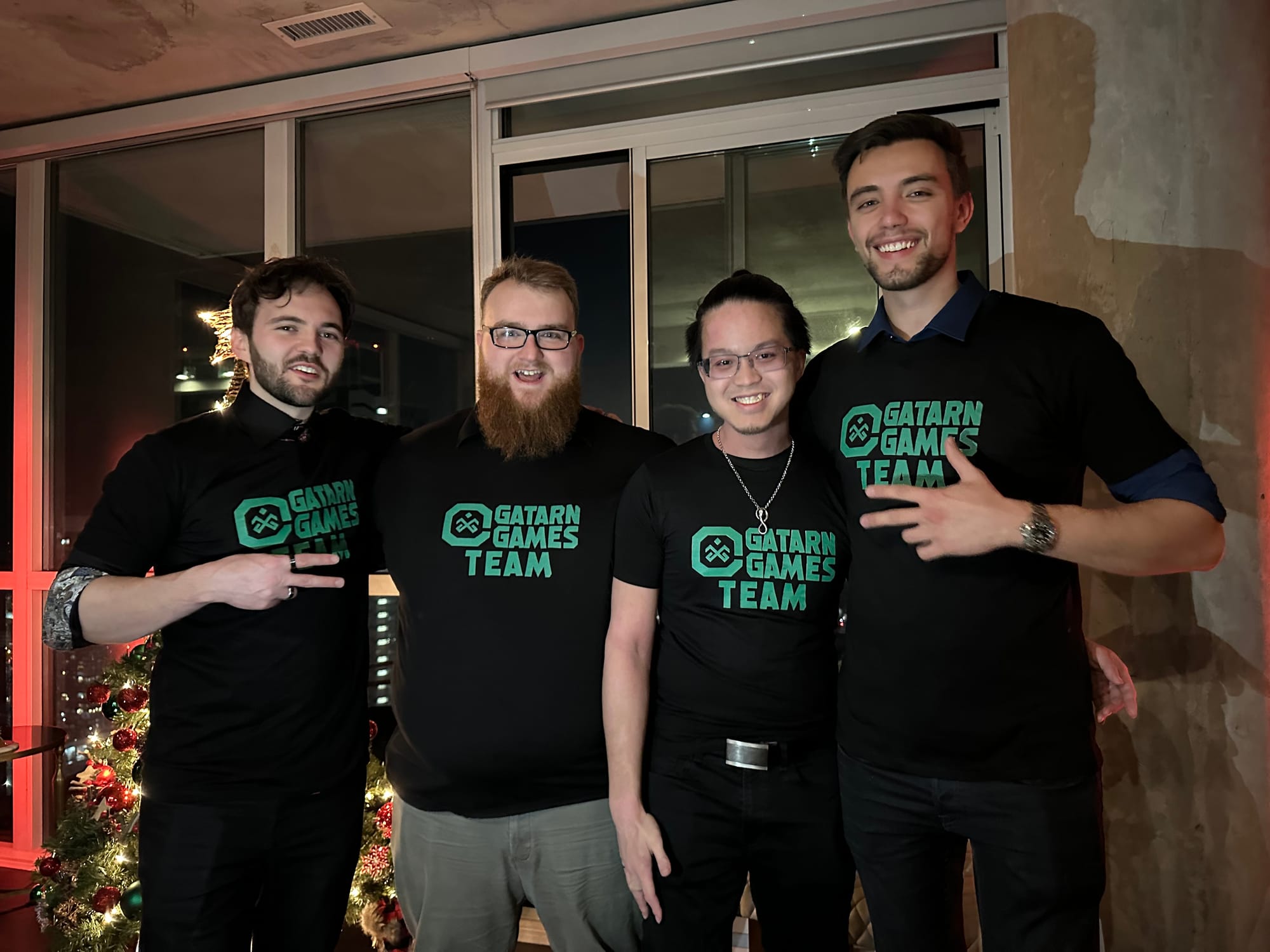
The game we're currently working on is based on a genre that's booming right now, where many titles are generating strong revenue. We’ve spent the past six months developing a mobile game called Rumblets Go. It’s built around a few popular concepts: players can collect and battle with pets (somewhat similar to Pokémon), and the gameplay includes a simple idle "clicker" mechanic where players can win rewards by tapping a button. The game is designed to be very easy for anyone to pick up and play, and the monetization model follows proven strategies seen in other top games. Our immediate goal is not to maximize revenue right away but to launch quietly, attract some early players, gather feedback, and refine the product based on what we learn. Mobile gaming is extremely competitive. If a top competitor’s game earns five dollars per user and ours earns only four, even if we’re doing many things right, we still lose — because they can afford to pay more to acquire players through ads. So, for now, our focus is on steadily increasing how much revenue we generate per player. Once we hit competitive numbers, we’ll be ready to invest heavily in advertising and scaling.
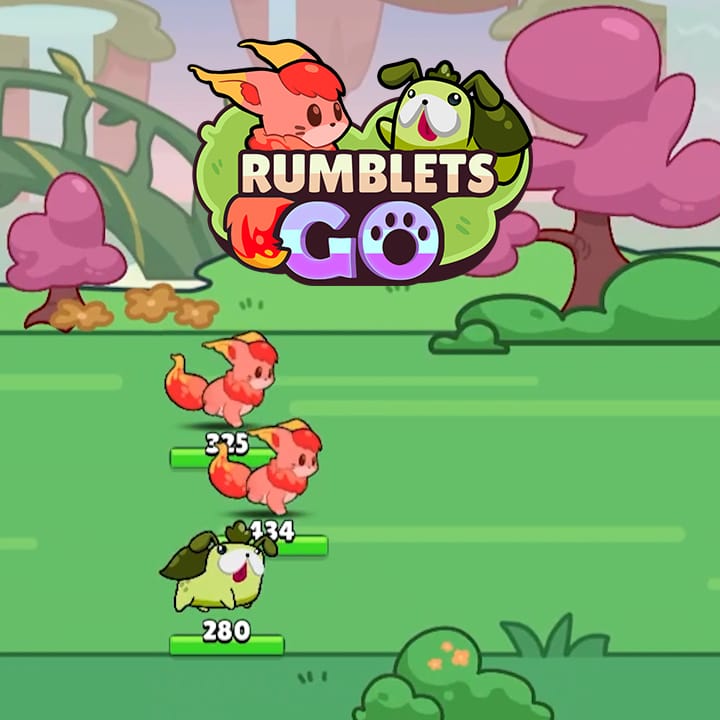
Volodymyr Demianenko: Who would you picture as your target audience for the new game?
Stan Tatarnykov: Even though our new game, Rumblets Go, has colorful art and cute pets — making it seem like a kids' game — our primary target audience is males aged 18 to 35, based on research into similar games.
However, we’re optimistic that we can attract more female players, too, because people respond very positively to the cute pet designs.
The game combines pet collecting with a simple, casino-style idle gameplay loop — players keep clicking a button, unlocking rewards, and making strategic choices like risking to double their health or playing it safe.
It’s simple for users to play, but more complex to design and balance behind the scenes.
Volodymyr Demianenko: Are you currently focused on one game, or do you have a few projects in the works?
Stan Tatarnykov: In mobile gaming today, the reality is that you usually need just one big hit to make the company successful.
There’s not much room for "small wins" anymore — you either break through in a big way or you’re not profitable.
Our goal right now is to focus entirely on Rumblets Go, polish it, improve it based on feedback, and give it every chance to succeed. That said, this first game took us six months, mainly because we were building all the foundational systems from scratch for the first time.
Now that those systems are built, even if Rumblets Go doesn’t succeed, we won’t need to start from zero. We can quickly rework or slightly modify what we’ve already built, and potentially launch a new game in as little as a month.
In short, we plan to keep trying — learning, iterating, and releasing — until we create a hit.
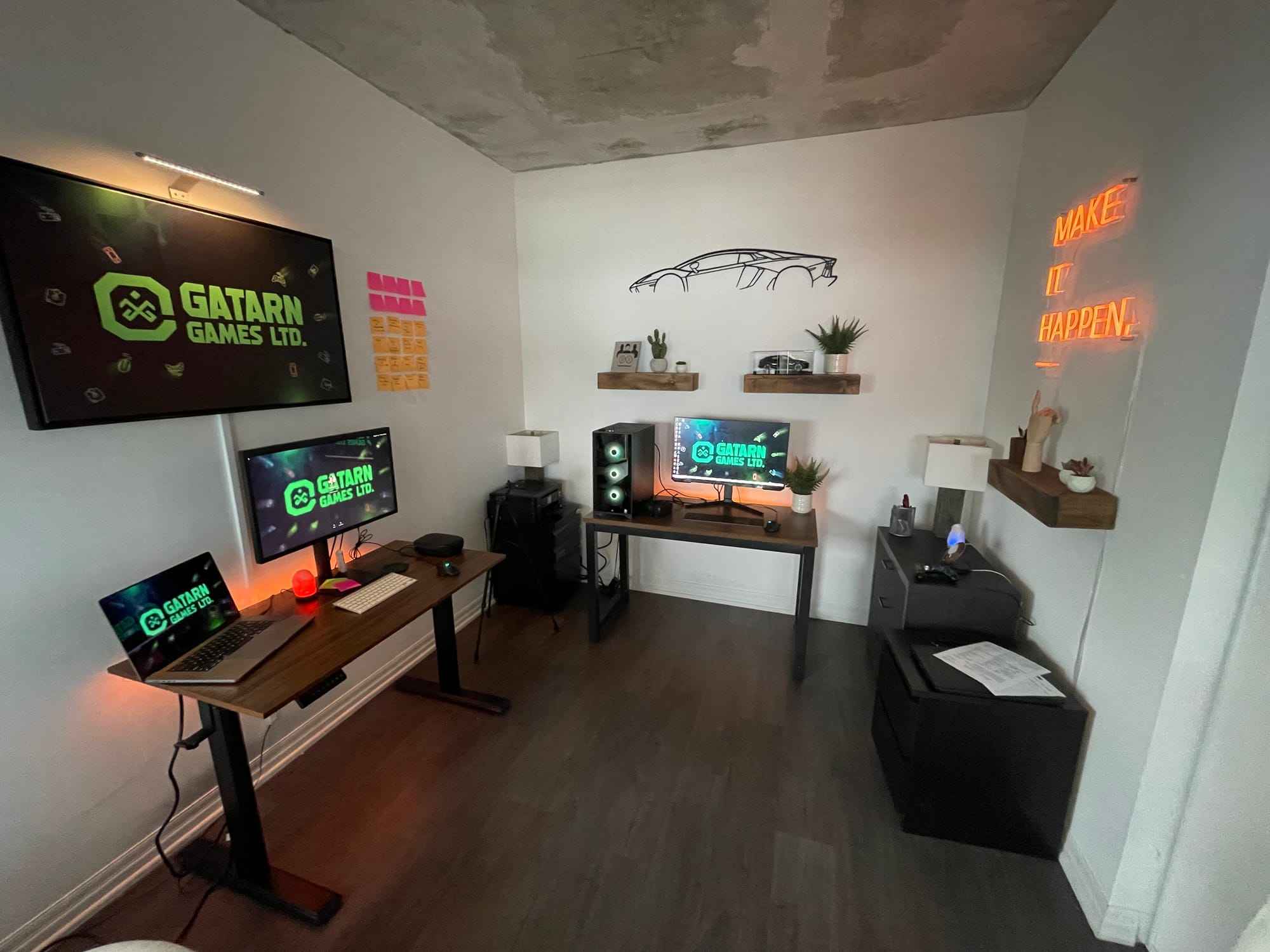
Volodymyr Demianenko: Let’s talk about AI. How do you see AI impacting the gaming industry — and your studio specifically? Is it changing anything when it comes to hiring or production?
Stan Tatarnykov: Definitely. I make sure everyone on our team uses AI as much as possible; it’s absolutely critical for smaller teams to stay competitive. We’ve been really impressed by the new AI tools, especially the latest ChatGPT image capabilities. For example, we use AI to help with UI/UX design. We take a screenshot of our game, ask AI to suggest improvements, and it generates a better-looking version of the interface. We then fine-tune it with Photoshop. We’ve also used AI for creating promotional screenshots: we provide our characters and artwork as context, and the system produces solid drafts that we refine manually.
In terms of coding, we use tools like ChatGPT Copilot. It’s extremely useful: while programmers still do the majority of the work, AI acts like a powerful assistant. If we’re building a new feature, we can ask AI for a template or example code, which saves a lot of time. It doesn’t replace real coding yet, especially because games, particularly those built in Unity, involve a lot of graphical UI setup beyond just writing code.
But overall, it easily doubles development speed without replacing developers.
Volodymyr Demianenko: Interesting. But is AI only speeding up production, or is it changing how games are designed and built?
Stan Tatarnykov: It's definitely speeding up production. For example, after our senior game designer left, I took over the game design myself, and I'm not a senior designer. I started using ChatGPT to guide me, asking things like, "What would a senior game designer do in this situation?" This saved us from hiring another full-time expert. Instead, we can now hire short-term consultants just to review and polish what we’ve already built, rather than relying on them for months.
In other words, AI is starting to replace expensive consultant-type roles that mostly provide advice or knowledge, allowing small studios like ours to move faster and more efficiently.
Art is another area being heavily impacted. AI can now generate 3D models, and as that technology matures, it will allow small studios to produce at a pace that rivals much larger ones. Essentially, AI is replacing the need for costly consultants whose main value was just their knowledge, without doing much hands-on implementation. The focus now is more on actually building things rather than just planning or consulting, and AI is making that much easier. It’s accelerating every part of development.
Volodymyr Demianenko: So you believe AI benefits small studios more than big ones?
Stan Tatarnykov: Absolutely — it's a game-changer for small studios. Large studios already have specialized experts for everything: sound design, music, UI, branding — their games are polished to a perfect 10 out of 10. A small studio, on the other hand, might have great developers but lack expertise in areas like UI or design. Before AI, if your UI wasn’t perfect, it might have been a "5 out of 10," simply because you didn’t have a dedicated designer. Now, with AI tools like ChatGPT, we can fill many of those knowledge gaps. We can ask AI what we’re missing, how to improve it, and even who we should consider hiring next. AI is helping small teams like ours compete with big studios by boosting efficiency, providing expertise, and leveling the playing field, at least to a degree.
Volodymyr Demianenko: Could you explain a little more about the mobile game market overall? How big is it? What’s happening there? Maybe you can also share some background information for our audience, because for me personally, it’s a completely different world.
Stan Tatarnykov: Sure.
The gaming industry is huge — it makes more money than movies and music combined, which most people don't realize.
And within gaming, the largest segment is mobile games.
The reason mobile games dominate is that anyone can pick them up — you don’t need a console or expensive setup. Games like Candy Crush or Monopoly Go are accessible to everyone, including older generations like our parents or grandparents. Interestingly, a significant amount of spending comes from older users who are willing to pay to finish a level, while younger, tech-savvy users are less likely to spend.
Because there's so much money in the mobile gaming market, big companies invest heavily in making their games extremely polished. They run constant A/B tests — for example, they show different button colors to thousands of users and pick whichever gets more clicks — and keep optimizing everything.
In contrast, smaller studios have fewer resources and often just "guess" on design choices, which puts them at a disadvantage.
Breaking into the mobile market as a small studio is tough because the big players dominate free traffic. App stores used to promote new games naturally, but now they prioritize games that generate the highest revenue per user. If a game like Candy Crush makes $5 per user and your game makes $1, the App Store pushes Candy Crush instead.
Today, to succeed in mobile games, you must invest heavily in marketing, user acquisition, and data-driven development, not just game creation.
And at this point, if you don't have a small team, if you're just one developer, you probably shouldn't even make a mobile game.
Volodymyr Demianenko: It’s tough!
Stan Tatarnykov: Exactly. That’s why we are aiming for niche markets — areas that are still profitable but too small to interest the huge companies who are chasing billion-dollar hits.
As a small studio, you have to be strategic. There are still opportunities on platforms like Steam, where indie developers can succeed with 1-2 person teams. The web gaming market used to be good, but it is no longer as promising.
Volodymyr Demianenko: A few questions about Ukraine. You moved to Canada when you were young, right? Around six years old?
Stan Tatarnykov: Yes, I was born in Kyiv and moved to Canada with my parents when I was five.
Volodymyr Demianenko: Do you still maintain any connections with Ukraine? Maybe through your team or work?
Stan Tatarnykov: Yes, two of my developers are Ukrainians. Ukrainians are great developers — hardworking and talented. Of course, like with any group, you have to find the right people.
I naturally connected with Ukrainian developers because I speak Ukrainian, so communication is easier. Also, hiring overseas is more affordable for small studios like mine — we can’t compete with big studio salaries.
But working with us is often more fun and meaningful. In a big company, you're just one of thousands. With us, if the game succeeds, your name can really stand out.
Volodymyr Demianenko: That makes sense. I think we have enough about the Ukrainian connection, but if there’s anything else you want to add, feel free.
Stan Tatarnykov: Sure. There’s a strong Ukrainian community here in Toronto. If you go to local game meetups, you’ll meet a lot of Ukrainians — great people. There are even a few small and medium-sized game studios here that are Ukrainian-run.
In general, there’s a lot of talent coming out of Ukraine, especially in tech and game development. And now, more than ever, it’s a good time for companies to support Ukrainian talent by hiring from there.
Volodymyr Demianenko: Is there anything else you'd like people to know about your company or yourself?
Stan Tatarnykov: Yes. We’re looking for entrepreneurial, builder-minded people who are ready to put in serious work and feel ownership over what they create.
We’re not just hiring people to clock in and out — we want teammates who are passionate about the product and the opportunity.
In the future, we might even offer profit-sharing or equity.
Being part of a hit project like Rumblets Go would be a great career booster for anyone — it’s a chance to gain real experience and credibility in the gaming industry.


